The Gibson Custom Shop Fuses Personal Touches With History and Innovation
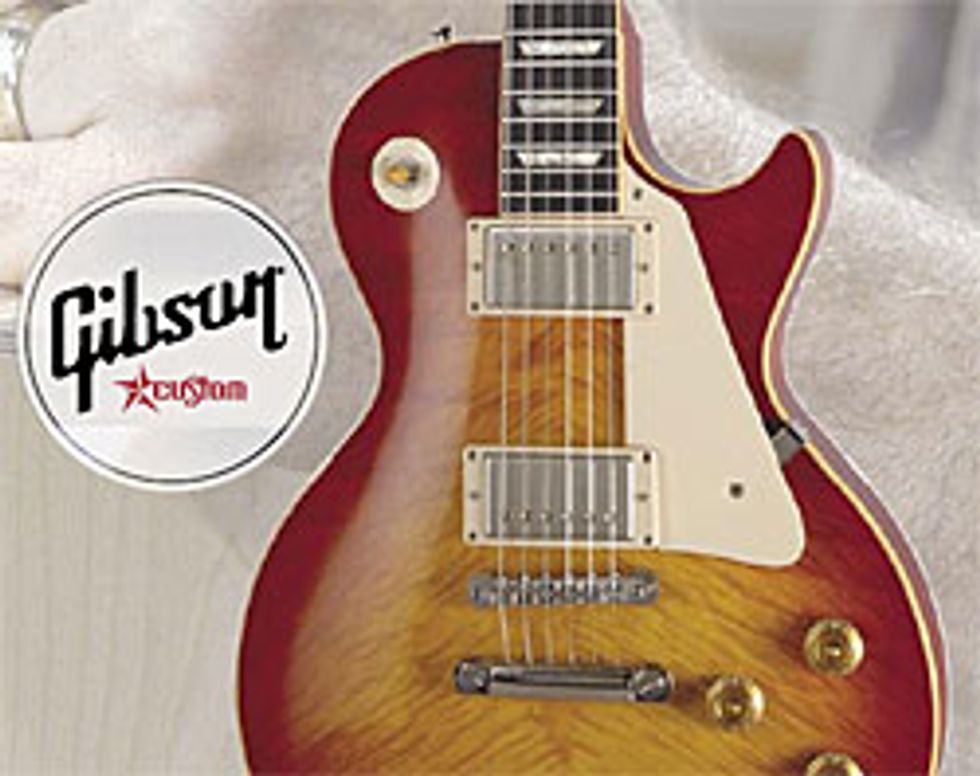 |
|
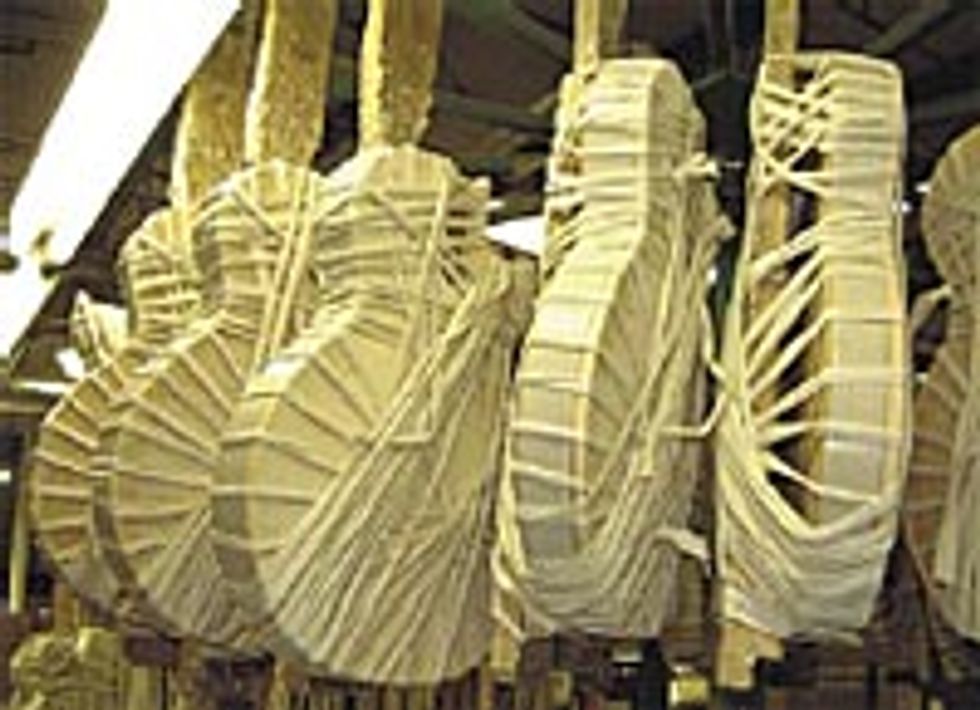 However, as preferences in the guitar market have made a pronounced shift toward smaller, boutique builders, the major manufacturers have adapted. The Gibson Custom Shop has taken a multifaceted approach to enriching their stock, adding three extensive lines in just two years. Ranging from meticulous recreations of vintage models to the “thinking outside the box” aesthetic of their artist-inspired lines, Gibson has devoted a great deal of attention to their Custom Shop ventures.
However, as preferences in the guitar market have made a pronounced shift toward smaller, boutique builders, the major manufacturers have adapted. The Gibson Custom Shop has taken a multifaceted approach to enriching their stock, adding three extensive lines in just two years. Ranging from meticulous recreations of vintage models to the “thinking outside the box” aesthetic of their artist-inspired lines, Gibson has devoted a great deal of attention to their Custom Shop ventures. This month, we’re taking a look at exactly what the Gibson Custom Shop has up their sleeves, how the company’s past has brought them to this point, and how you can get your hands on one of these distinctive instruments.
Evolution of the Custom Shop
The first hint of what the current Gibson Custom Shop offers can be found in early artist partnerships. The idea of affixing an artist’s name to an instrument – to the benefit of both the artist and the manufacturer – is nothing new in the guitar industry, and Gibson has been at it since the 1920s. Gibson’s first foray into artist models came with the Nick Lucas Model acoustic guitar, which was followed by the Roy Smeck Stage Deluxe Hawaiian guitar in the ‘30s, and the Les Paul and Byrdland model electrics in the 1950s. Into the ‘60s, artists such as Barney Kessel, Trini Lopez, Johnny Smith and Tal Farlow were graced with their own Artist models, but custom instruments were another matter, having been limited to employee requests and one-offs for individual artists.
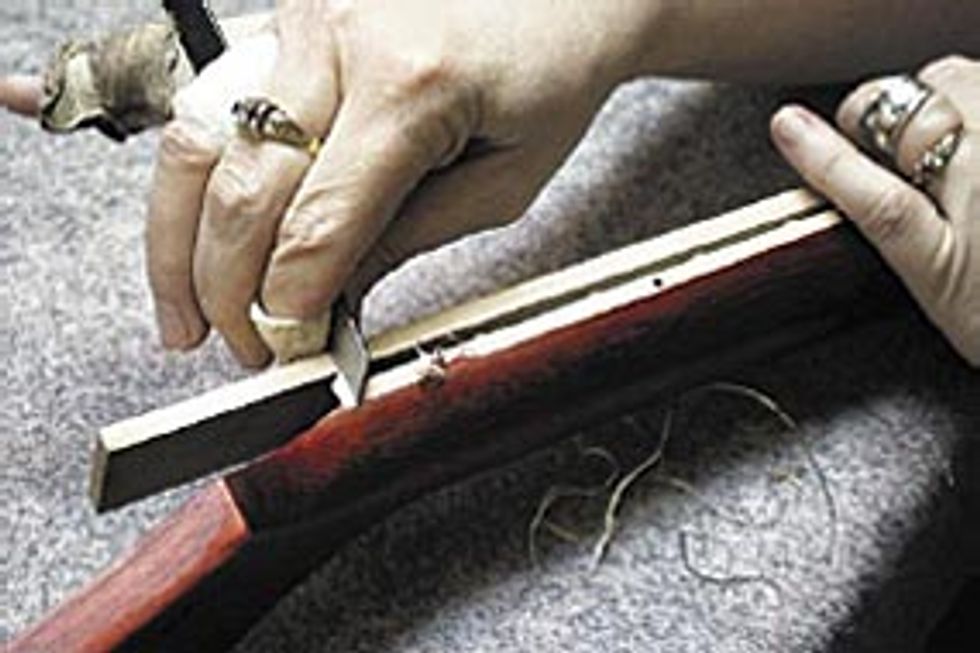 This was no longer the case in the ‘80s, which became a time of great change for Gibson. In addition to their move from Kalamazoo, Michigan to Nashville, Tennessee early in the decade, Gibson began building custom guitars for individuals who had no other ties to the company other than the needed funds and a local Gibson dealer willing to make a few phone calls on their behalf. This tactic proved successful enough that when Henry Juszkiewicz and Dave Berryman bought the company in 1986, Gibson decided to split the Custom Shop into a separate division within the organization.
This was no longer the case in the ‘80s, which became a time of great change for Gibson. In addition to their move from Kalamazoo, Michigan to Nashville, Tennessee early in the decade, Gibson began building custom guitars for individuals who had no other ties to the company other than the needed funds and a local Gibson dealer willing to make a few phone calls on their behalf. This tactic proved successful enough that when Henry Juszkiewicz and Dave Berryman bought the company in 1986, Gibson decided to split the Custom Shop into a separate division within the organization. The 1990s proved to be an eventful decade for the company, beginning with Rick Gembar taking the helm as Custom Shop General Manager in 1993. It was also during this time that Gibson developed the idea for limited edition replicas of popular artists’ instruments. Going beyond simply replicating sought-after vintage guitars from the company’s past, these guitars were initially based on tried and true vintage designs, but included the modifications that particular artists had done to make the instrument more functional for their needs.
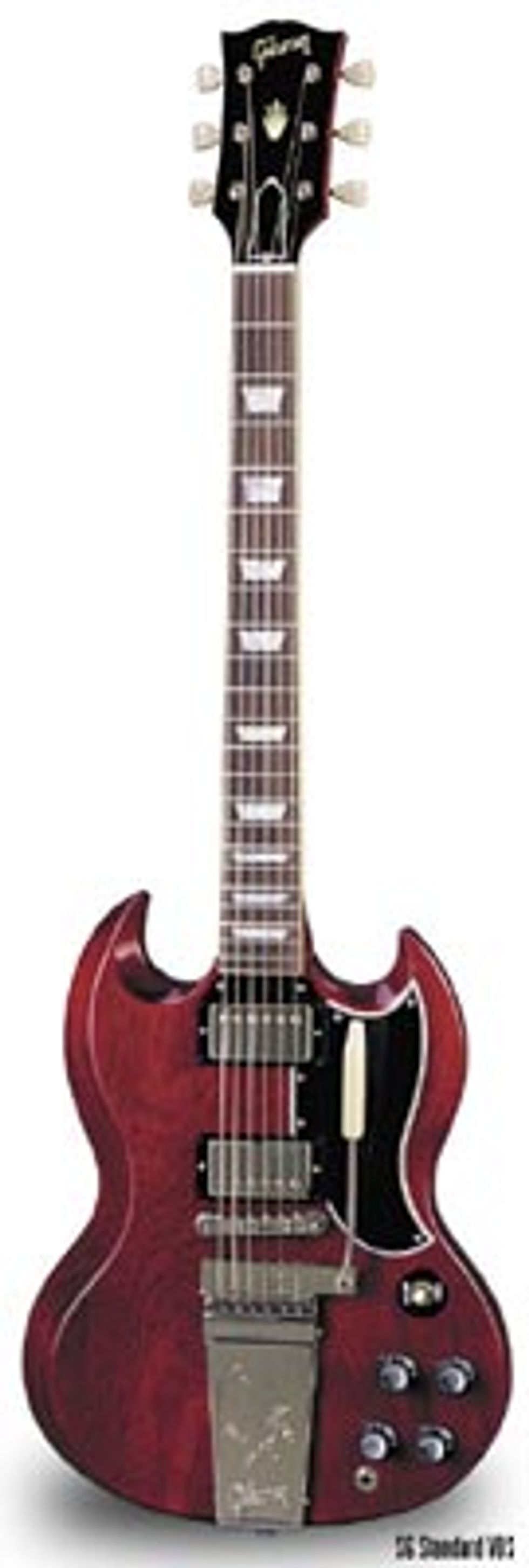 The first in this series for the Custom Shop was the Joe Perry Les Paul in 1996, followed by the Ace Frehley in ’97 – both of which then had production runs at Gibson USA. These have been followed by other blockbusters, including the Eric Clapton 335 and the Jimmy Page Les Paul. Today, the Signature series features a diverse array of instruments from artists ranging from metal masters Judas Priest, whose modified SG exemplifies Glenn Tipton’s stripped-down rock and roll machine, to jazz/rock guitar legend and Mr. ES- 335 himself, Larry Carlton, who has a Signature model replicating his beloved 1968 ES-335.
The first in this series for the Custom Shop was the Joe Perry Les Paul in 1996, followed by the Ace Frehley in ’97 – both of which then had production runs at Gibson USA. These have been followed by other blockbusters, including the Eric Clapton 335 and the Jimmy Page Les Paul. Today, the Signature series features a diverse array of instruments from artists ranging from metal masters Judas Priest, whose modified SG exemplifies Glenn Tipton’s stripped-down rock and roll machine, to jazz/rock guitar legend and Mr. ES- 335 himself, Larry Carlton, who has a Signature model replicating his beloved 1968 ES-335. Throughout the ‘90s and into the current decade, while Gibson continued to release various Signature models, the Custom Shop did anything but stand still. They have been busy building some of the finest vintage reproductions available. Their quest to replicate the “Holy Grail” of late ‘50s Les Paul Standards actually began in 1979, when the plant was still located in Kalamazoo – the introduction of the Les Paul KM model, which, although not a true reproduction, sought to offer the features players were seeking in the vintage models. This was followed by the Nashville-produced Heritage 80 Les Paul, which more closely followed vintage Les Paul specs. Along with limited runs for various dealers who specialized in vintage and high-end Gibsons, these guitars paved the way for the current offering of accurate reproductions from Gibson’s Custom Shop.
Today, the Custom Shop still operates upon many of the same tenets that Gibson was built on over 100 years ago, always keeping legacy and tradition close – even going as far as using some of the same machinery used to build the original instruments. In 2000, Gibson opened a new facility in Memphis, Tennessee, devoted to building semi-hollowbody guitars such as the famed ES-335. This plant shares the Custom Shop workload with the Nashville facility. In 2006, the Nashville Custom Shop moved into a larger facility, enabling the division to continue to produce outstanding quality while meeting ever-growing demand.
In the past two years, the Gibson Custom Shop has focused their efforts as the popularity of custom guitars has grown. They have added the Inspired By™ artistcentric series in 2005, the Vintage Original Spec™ series of faithful reproductions in 2006, and the Popular Demand™ line of guitars based on customer requests in 2007.
Blasts from the past
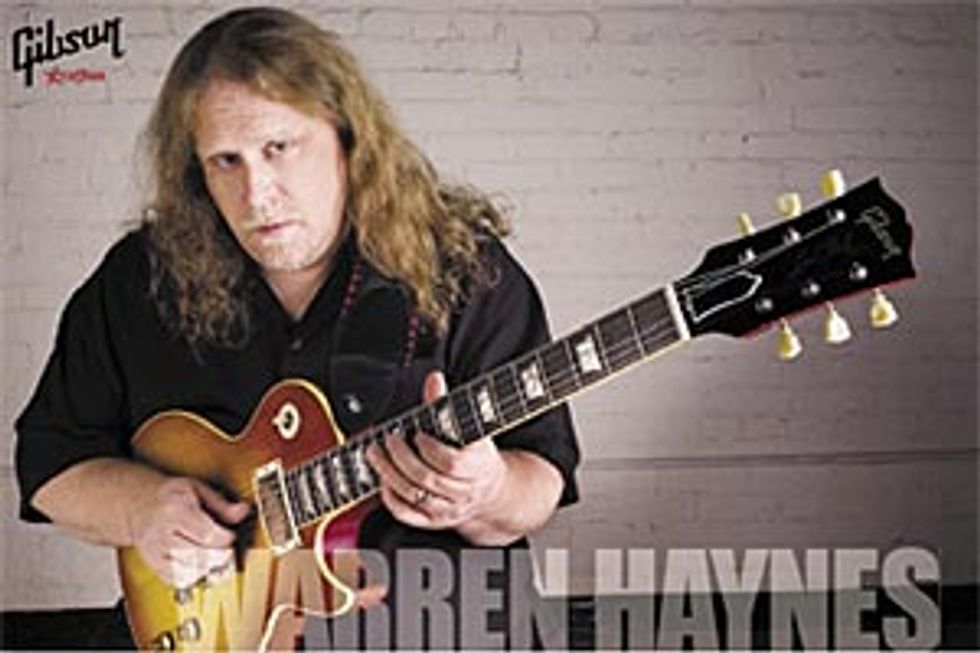 The Gibson Custom Shop has garnered acclaim for recreating classic guitars from years gone by, allowing players and collectors to come as close as possible to owning an incredible vintage instrument without coughing up six figures.
The Gibson Custom Shop has garnered acclaim for recreating classic guitars from years gone by, allowing players and collectors to come as close as possible to owning an incredible vintage instrument without coughing up six figures. The Vintage Original Spec line (VOS) best exemplifies the Custom Shop’s unyielding dedication to historical accuracy. The line, launched in 2006, to date has released 17 Les Paul and SG models.
Each guitar features solid mahogany backs and long neck tenons to reproduce the sound and sustain of the vintage instruments. The electronics and hardware on the instruments are as accurate as possible – Gibson puts a great deal of effort into researching this, hence the “Original Spec” part of the name. Though they can’t use an exact duplicate for every piece of equipment, they manage to come pretty close, with items like the nearly identical, lightweight aluminum stopbar tailpieces available on most of the VOS guitars.
What really sets these guitars apart is the unique aging process that makes them appear to be a well cared for 40 year old guitar. The process includes softening the edges, giving the hardware a lightly oxidized look, and a finishing method unique to Gibson. The models are also available without the aging process, per dealer request.
Though there are no immediate plans to include archtops or ES guitars in the VOS line, the VOS is not the only line of historic reissues. Gibson offers “Historic” versions of their archtops, ES series, and special designer guitars like the 1959 Flying V. Additionally, limited Historic versions of Les Pauls exist outside of the VOS series, like the 1954 Oxblood. While these aren’t as readily available as the VOS guitars, some are still available through dealers.
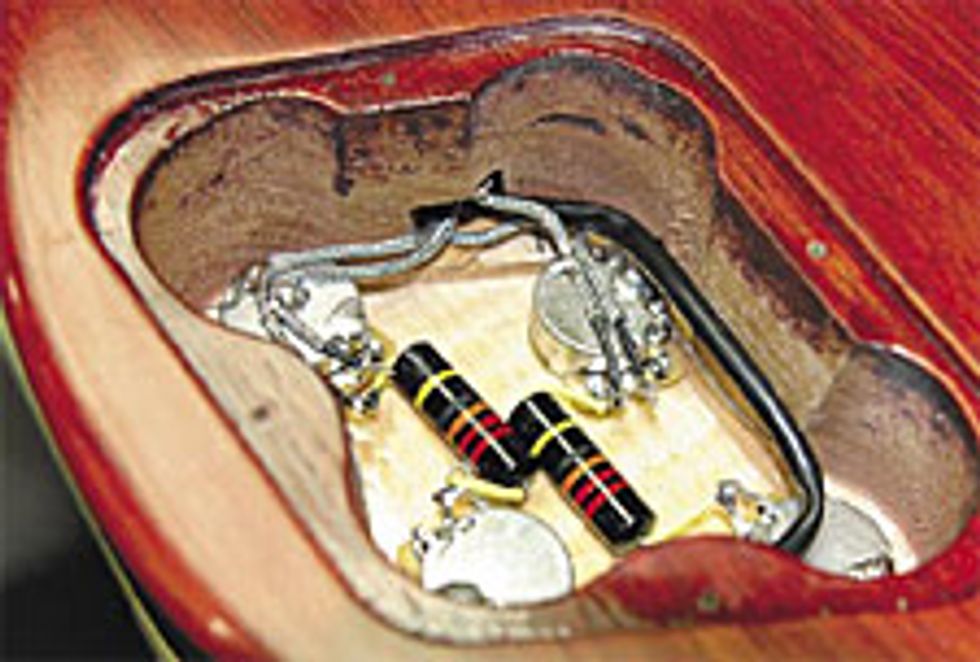 Inspired by the greats
Inspired by the greatsAside from taking inspiration from past models, the Gibson Custom Shop is also known for its artist-inspired models. Familiar to most players is the Signature Series, though the newer Inspired By series, started in 2005, is beginning to quickly build in popularity.
The Inspired By series has drawn considerable attention from players due to the unconventional artists that are already represented. From actor Kiefer Sutherland’s KS-336-based Inspired By model, to regional guitar ace Johnny A.’s two uniquely styled hollowbodies, Gibson stands by its decisions with pride, choosing artists with passion and a good ear to make unique guitars.
| “The Inspired By guitars differ from the standard signature guitars in their extreme limited release. While some artists, like Zakk Wylde and Peter Frampton have both signature and Inspired By guitars, the Inspired By guitar is limited to 300 pieces, after which it is put away forever, while the Signature Series are meant to be able to be reproduced for years to come.” |
Some of the Inspired By guitars reflect the exact representation of a specific guitar, as in the case of the Jimi Hendrix 1967 Flying V, the first guitar in the Inspired By line. Released in 2006, it was an exact recreation of Jimi’s hand-painted V, used during The Experience’s ‘67-‘68 tour of Europe. Others are built to the specifications of the artist – taking into account their needs and modifications desired to build their dream guitar. An example of this is the Peter Frampton Les Paul Special, which adds a third P-90 to the traditional design, as well as a Tune-o-matic bridge and slim taper neck profile – features not typically associated with Specials.
The Inspired By guitars differ from the standard signature guitars in their extreme limited release. While some artists, like Zakk Wylde and Peter Frampton have both signature and Inspired By guitars, the Inspired By guitar is limited to 300 pieces, after which it is put away forever, while the Signature Series are meant to be able to be reproduced for years to come.
While Gibson has proved that we can never predict who they will feature next, they did share their next Inspired By model: the John Lennon Les Paul, based on the modified Les Paul Junior that John played during his Madison Square Garden performance in 1972.
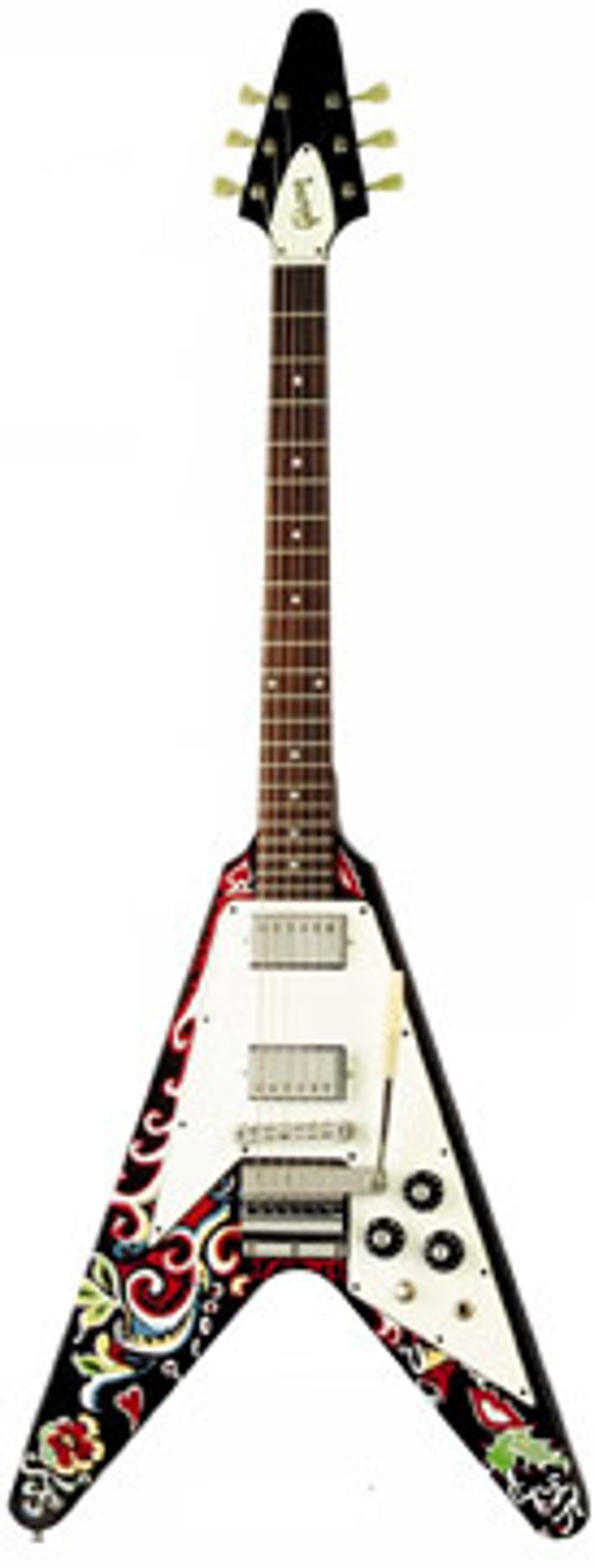 Running the custom gamut
Running the custom gamutBeyond the historically accurate and artist- inspired guitars, the Gibson Custom Shop puts out a wealth of uniquelycrafted guitars. Ranging from the flashy Les Paul Ultima to the CS-336, an entire model created within the Custom Shop walls, nearly all types of Gibson guitars have a custom cousin.
While the Custom Shop used to fill individual orders for one-off guitars, the demand for other custom shop models became so high that they had to stop. To fill the void left by this, they started the Popular Demand series in early 2007.
The Popular Demand series is, as one might imagine, based on the most commonly requested changes that the custom shop receives. These demands come from all over, from players to dealers to the craftsman working in the Custom Shop themselves. Gibson’s goal is to release a new, limited run Popular Demand guitar each week, and hopefully meet more than 90% of one-off requests through these instruments.
Outside of the Popular Demand line, the vast collection of Custom Shop guitars is home to some of Gibson’s most creative, atypical guitars, many of which stem from partnerships with other companies, like Corvette, Playboy and Jim Beam. Gibson gets a lot of interest from outside companies; after all, who wouldn’t want their logo on a Les Paul?
Gibson’s partnerships usually reflect interests that most players already have along with a love of guitars: cars, women and the rock and roll lifestyle, though they have strayed outside of this threesome in more artistic partnerships, like one with fashion designer Anna Sui. These partnerships are a challenge for the talented Custom Shop luthiers who can both stretch creatively and have fun with the guitars.
By the time Gibson had released the first Nick Lucas model, the company was barely a quarter of a century old, and was already garnering a reputation as an innovator with an eye toward tradition. Today, Gibson has been around for more than a century and has created more than a few traditions of its own. The Custom Shop stays true to the company’s earlier distinction as a leader respectful of convention, using everything from traditional guitar making methods to the most modern manufacturing techniques, whichever will better suit the intended instrument. Whether it is a faithful recreation of a 50-year-old design or something thoroughly modern and unique, the Gibson Custom Shop will make sure it is worthy of having the Gibson logo on the headstock.
| Have you ever visited Gibson Custom Shop’s website to pick out a new guitar and walked away from the experience a little perplexed? Are you uncertain if that Les Paul you’ve been jonesing over is considered a Historic, or a VOS, or if it is even still available? We can’t answer all of these questions, but we can help you narrow the focus down a bit. The graph below shows the three main categories available from the Custom Shop, as well as the various subcategories therein. Using this chart, in addition to referring to gibsoncustom.com, should enable you to ask your dealer some well thought-out questions. Enjoy!
|
Gibson
gibson.com
From Your Site Articles
- Gibson Announces the Grand Opening of the Gibson Garage - Premier Guitar ›
- Reader Guitar of the Month: In Loving Memory of Alan Vincent - Premier Guitar ›
- Gibson Reveals the Johnny Winter 1964 Firebird V ›
- Gibson Announces the Dave Mustaine Flying V EXP - Premier Guitar ›
- Gibson Launches the Theodore - Premier Guitar ›
- Gibson Launches the Theodore - Premier Guitar ›
